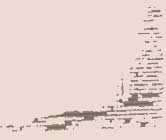


|
The Mazar Imam Kozihon
Record of this mazar (a holy tomb) is contained in the
"Mullo-zoda" book. This book mentions also full name of Imam
Kozi-hon. It is Imam Khasan ben Mansur ben Mahmud ben Abdulazis Margilani. The record also mentions that
Kozi-hon was a judge in Bukhara and he is an author of several books. People of Bukhara still remember an interesting narrative about him.
The story
When Hulagu-khan with his army laid siege to Bukhara, he sent defenders his ultimatum. He asked a question that put Bukhara people to confusion. The question was: "What brought me on your heads?" He warned them that if they will not answer the question correctly, he would level Bukhara to the ground. He gave them 40 days for deliberation. But they couldn't make up their mind to find a proper answer. Luckily in one
"maktab" - a school - there was a boy who stated that he knows what to say. As time constraints were expired they decided to send the boy to Hulagu-khan.
He took a camel and a big white he-goat with him. Bukharian took the boy to Hulagu-khan with great honor in a
palanquin (moafa). When Hulagu saw that an envoy is a boy, he became angry and said, "Don't they have someone bigger than this boy, or don't they have white-beard old men?" But the boy said to him, "If you prefer to talk with someone who is bigger than me, I have a camel with me; if you want to talk with someone who has a white beard, I have a he-goat. If you want an answer, then listen, our bad deeds brought you on our heads".
Hulagu was astonished by his wisdom therefore he said to the boy, " I was in many countries, but no one answered on my question correctly. And nothing can be said against that. Ask what I shall do for you." And the boy said, "Please, give me a
piece of earth measuring with camel's hide." Then he told to kill the camel, to flay him and to cut his hide into thin, hair like strips. With these strips he surrounded Bukhara. Thereby he saved Bukhara.
The boy gave the order to build a wall on the perimeter of Bukhara how it was marked with strips. Then he left Bukhara for a while. Slow-witted builders began to dig on the inside. Therefore at the city site had appeared a deformed trench; at the same time around the city there was no fortification ditch. When the boy returned home he stopped the construction. He told to builders, "If you will take clay on the outside, you can build ditch and wall at the same time. By this way we will make Bukhara an impregnable stronghold".
The boy went on, and grew great. He continued to learn more and more. People liked him, because they regarded him as their judge, who can deliver them out of the hands of their enemies. He became widely known as
Imam Kozi-hon.
When Imam Kozi-hon died, people started a tradition to pray at his grave for a healing especially from
guinea worm disease. People of Bukhara revered his memory. In the past no one could even rode past his tomb on horseback.
Though the narrative is undoubtedly very interesting, a simple comparison of dates greatly disharmonizes it. If
Imam Kozi-hon was born in 1132 - as it is written on his tomb - it was 85 years previously Hulagu's birth. Thus, the dating of
Kozi-hon's life is not correct, or the narrative is not based on historical event. Whatever the case, the story takes ones fancy as evidence that Bukhara was an eyewitness of
Hulagu's crusade.
Hulagu Khan
Hulagu Khan, also known as Hulagu (1217 - 8 February 1265), was a Mongol ruler who conquered much of Southwest Asia. A
grandson of Genghis Khan and the brother of Arik Boke, Mongke and Kublai Khan, he became the first
khan of the Ilkhanate of Persia. In 1255, Hulagu, the child of Tolui and Sorghaghtani Beki, a Christian woman, was sent in 1256 by his brother Mongke (who was
Great Khan from 1251-1258) to conquer or destroy the remaining Muslim states in southwestern Asia. His mother was a passionate
Nestorian Christian, as was his wife, Dokuz Khatun, and his closest friend and
general, Kitbuqa. Their influence was said to have instilled in him a desire to be a defender of the Christian faith. He was also passionate about Persia and its culture, the reason why he became the Khan of Persia under Ilkhanate dynasty.
Hulagu's military campaign (also known as crusade undertaken in the 13th century by the Christian powers of East) sought the subjugation of the Lurs, a people of southern Iran; the
destruction of the Hashshashin sect; the submission or destruction of the Abbasid caliphate; the submission or
destruction of the Ayyubid states in Syria; and finally, the submission or
destruction of the Bahri Mamluk Sultanate of Egypt. Mongke Khan ordered Hulagu to treat kindly those who submitted, and utterly destroy those who did not. Hulagu vigorously carried out the latter part of these instructions. Hulagu marched out with perhaps the largest Mongol army ever assembled.
Sources
1.
Dmitriy Page. The Guide to Bukhara. History and sights.
2. Дмитрий Пэйдж. Бухара. Путеводитель по архитектурным и историческим
достопримечательностям
3. http://en.wikipedia.org/wiki/Hulagu_Khan
See also
1.
Мазар Имам Кози-хон
2.
Imom Kosi-Hon Masar
3. Bukhara Map
|






